Sime Road Camp - Singapore
Sime Road Camp – Singapore
Originally the 470 acre site was the Command HQ for the combined British Army and Royal Air Force. Lieutenant General Arthur E. Percival, General Officer Commanding Malaya in charge of the Malaya Command, ran military operations from this camp.
Following the Fall of Singapore, the site became an internment camp for POWs.
Sime Road Camp was located closer to the golf links about a mile from Adam Park on the southern perimeter of the MacRitchie Reservoir. Here the accommodation was not as palatial as Adam Park, being native huts that were scattered and spread over a wide area. The huts were typical atap style built on concrete bases. The huts derived their name from the roofs which were constructed using the broad atap palm leaf.
The Royal Singapore Golf Club’s course was considered to be one of the best in the world with its water hazards and course layout. The Japanese had decided to use this as a site for the “Fallen Warriors Shrine.” The prisoners from Adam Park, Sime Road, Thompson Road (Caldecott Hill Estate), Mt Pleasant Estate, and Lornie Road were to work on the Shrine. The water hazards were converted into miniature lakes with rustic bridges and ornamental gardens. On one side of the course was a thickly wooded hill (Bukit Batok), which was about 350 feet high. The Japanese decided that this would be the perfect site for their shrine, so the top of the hill was levelled to form a plateau in the centre about 50 yards square. A stairway was built leading up to the plateau using granite slabs; there had been honed by the local Chinese Artisans and placed into position by the prisoners.
Major Bert Saggers WX3454 headed up the Australian POWs sent to Sime Road.
This group was moved back to Selarang Barracks Changi on 27th December 1942.
During the latter part of the war, Sime Road Camp held mainly British and European citizens.
From Dec 1943 to May 1944 the returning 1800 survivors of the Burma-Thai Railway were housed here. In April 1944 Major General Shito took over administration of internment camps and ordered all military POWs be moved to Changi Prison – civilians then accommodated at Changi Prison were moved to Sime Road (including former Governor of Straits Settlements Sir Shenton Thomas and Lady Daisy Thomas. Women internees were accommodated separately (with their sons until they were 12 years old and they were then moved to the men’s camp.) The women had their own hospital separate from the men.
As was the case at all internment Camps, the civilian camps received inadequate food – peaking at the lowest in March 1945. Malaria and typhus were endemic.
By the end of war civilians totalled 4,507 persons from 27 nationalities at Sime Road including 1,023 women and 328 children. British formed the larger proportion of internees, however there were also significant numbers of Eurasians, Australians, Jews, Chinese and Poles.
The civiliaan internees at Sime Road were reportedly treated better than those at other Japanese camps, such as Sumatra or even Changi Prison in Singapore. Even so, there were many deaths.
The repatriation of the various nationalities obviously took time. Sime Road became the became a place of transition for former prisoners before they found accommodation or were repatriated.
After the war five Japanese administrators of Changi and Sime Road Civilian Camps were subsequently found guilty and sentenced to various terms of imprisonment, ranging from one to ten years.
Please read further about the Singapore War Trials for civilian internment camps
30 May 1942 there was trouble when 60 men were caught outside the wire at Adam Park. The men were given seven days detention and fed only one meal per day of plain rice. Most of them had been out shopping on the black market however, three 2/4th men had out searching for bodies at Hill 200.
Joe Swartz, Joe Meredith and Lawrance Nybo were unsuccessful in locating the unburied corpses of Len Helliwell, Allan Brown, Keith ‘Bully’ Hayes, Frank Curnow, Doug Royce and Ossie McEwen.
Finally on 21 Dec 1942, 10 months after surrender and after months and months of requests and negotiations Major Cough with Capt John Hill was permitted to take out a burial party of 20 2/4th men from Sime Road Camp. They located and identified 27 bodies of men from ‘A’, ‘C’, ‘D’ and HQ Companies and were able to provide a decent burial for them.
It became horribly evident to the POWs that In the process of burying their dead, the Japanese had to work around the corpses of their enemy – they would have had to step over them and around them and the Japanese even buried their own amongst the Commonwealth troop’s bodies. It would not have been too demanding to push the bodies into the nearby slit trenches and cover them over. The men could not fathom how the Japanese could care for their own dead and leave the unburied corpses of their enemies to the elements and marauding pigs. This was beyond their belief and proved distressing.
Below: Sime Road Camp, Singapore
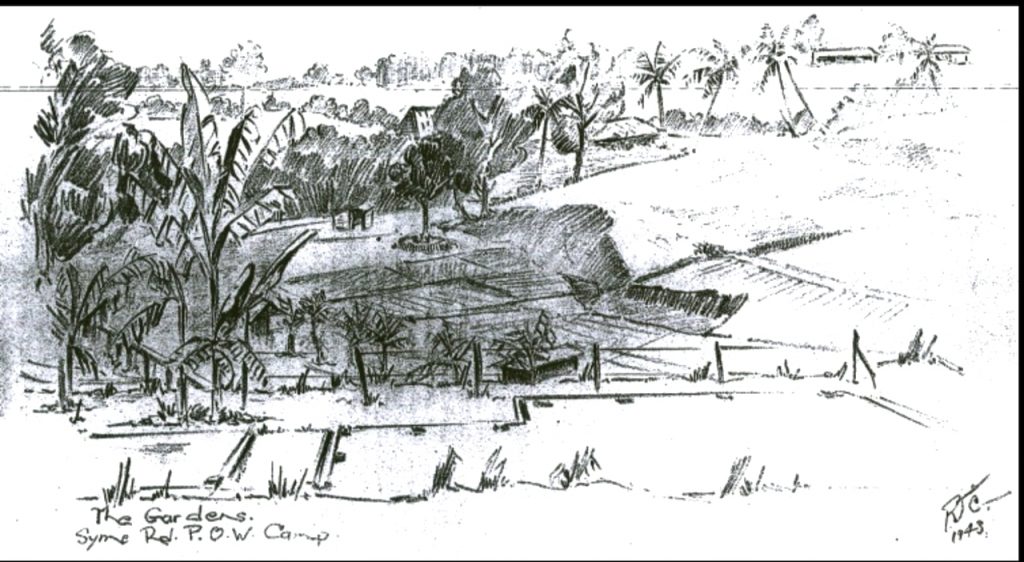
Below: 3 families for 3 bunk beds
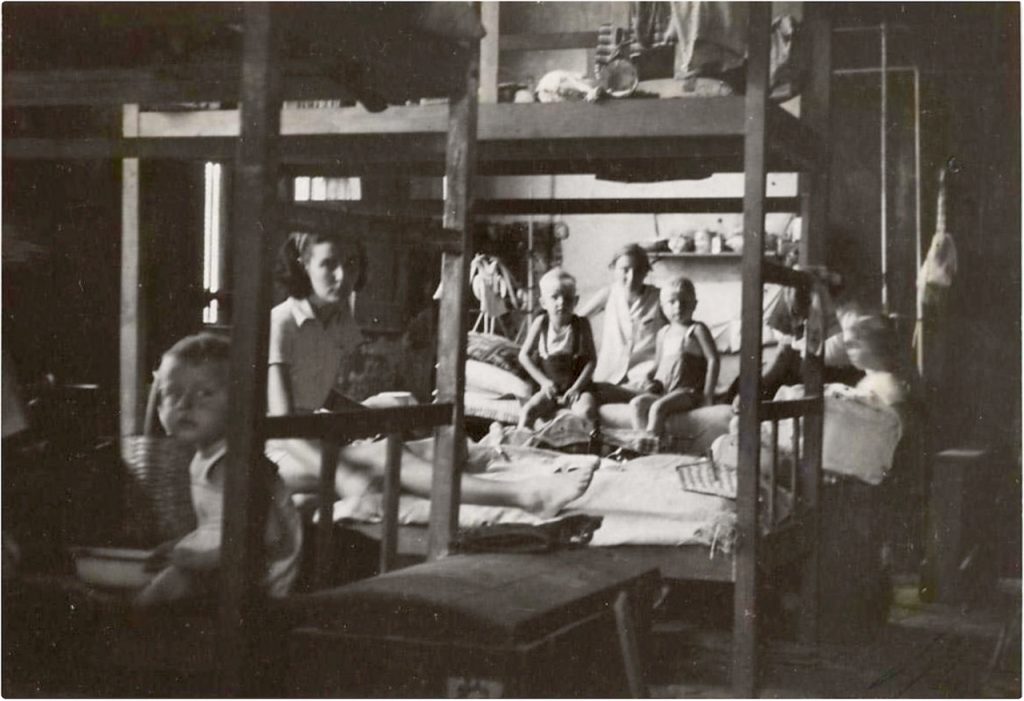
Below: Women’s camp showing garden and Laundry
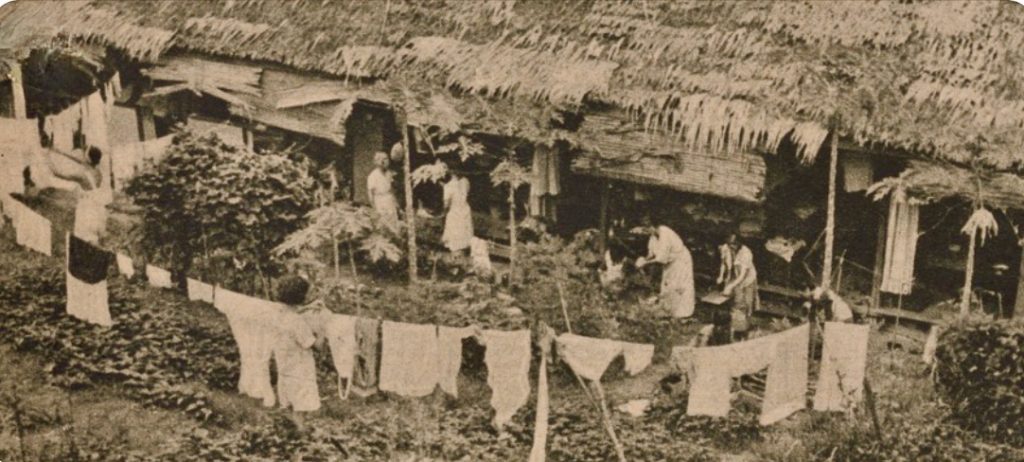
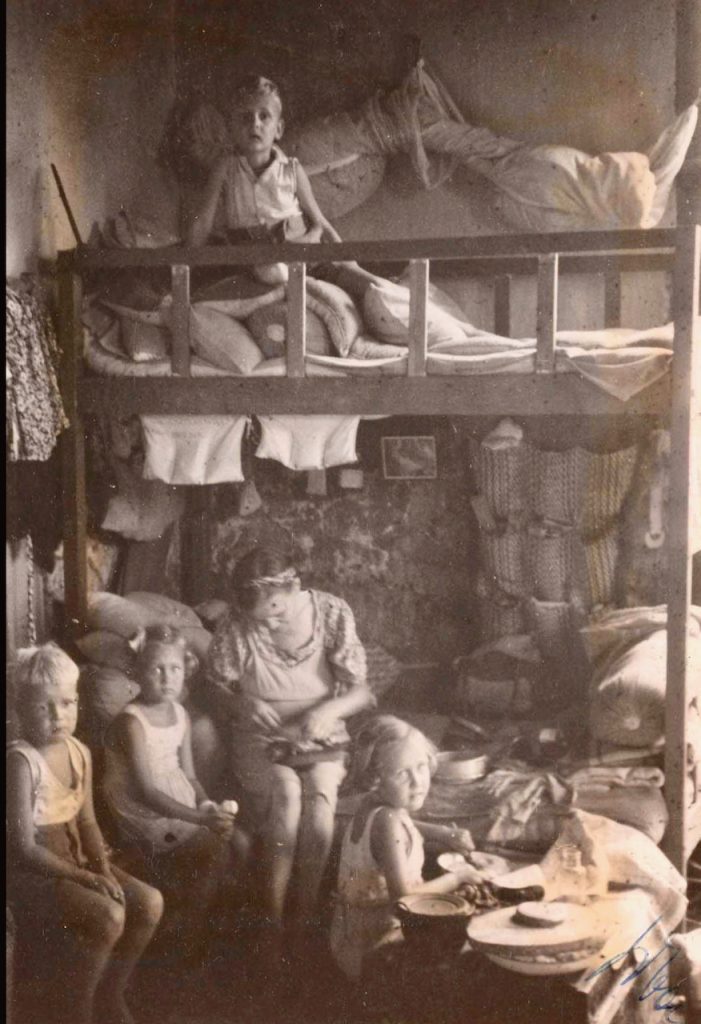
Above: One family’a corner.
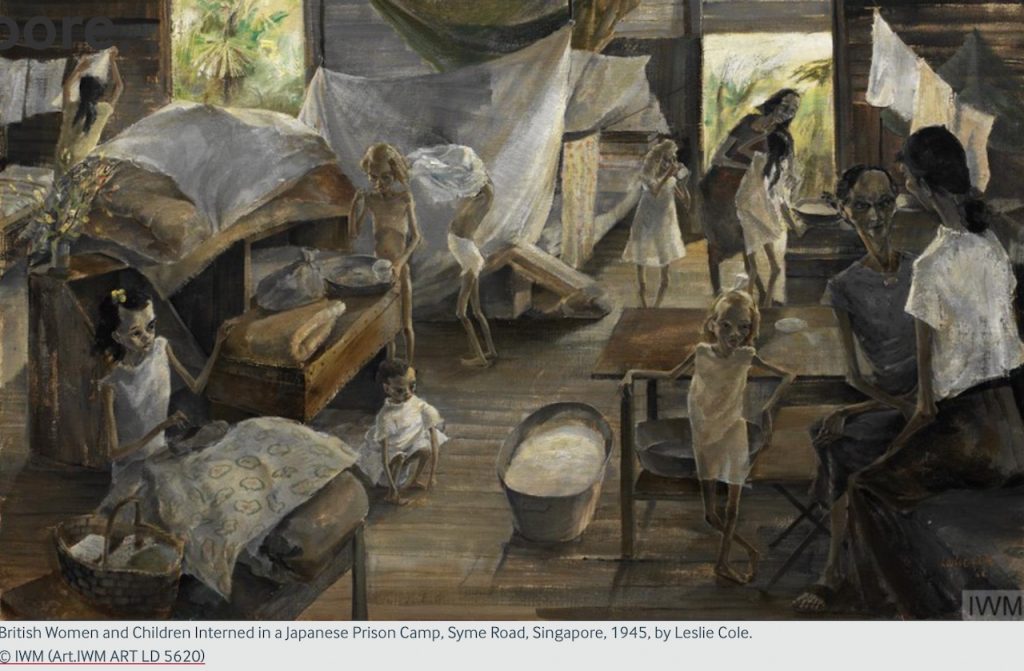
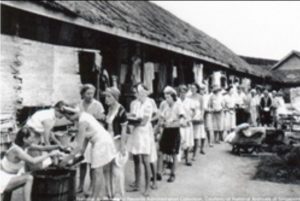
Above women waiting for food
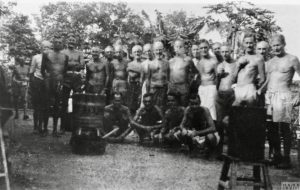
Above & Below: Civilian Internees, Sime Road

